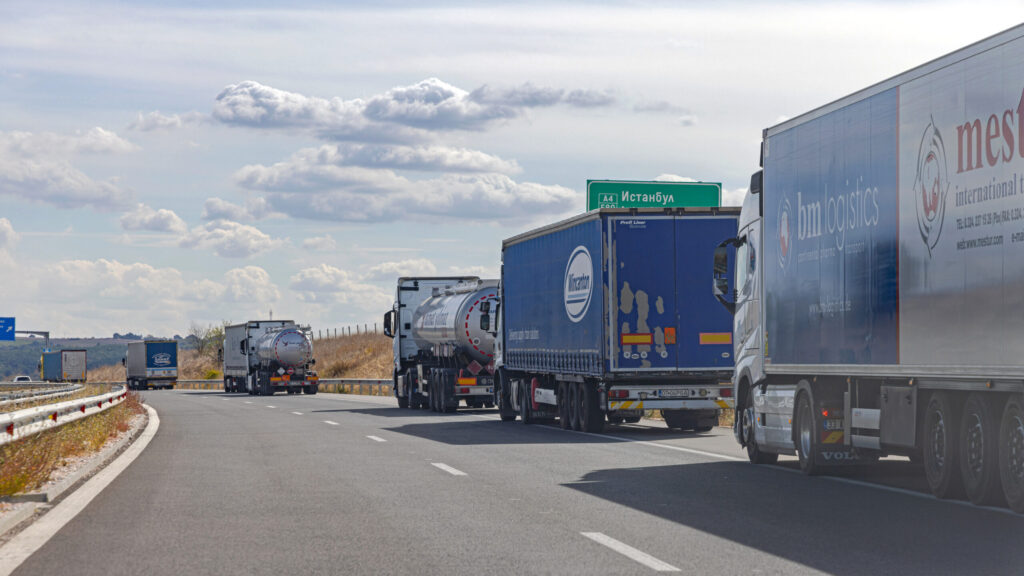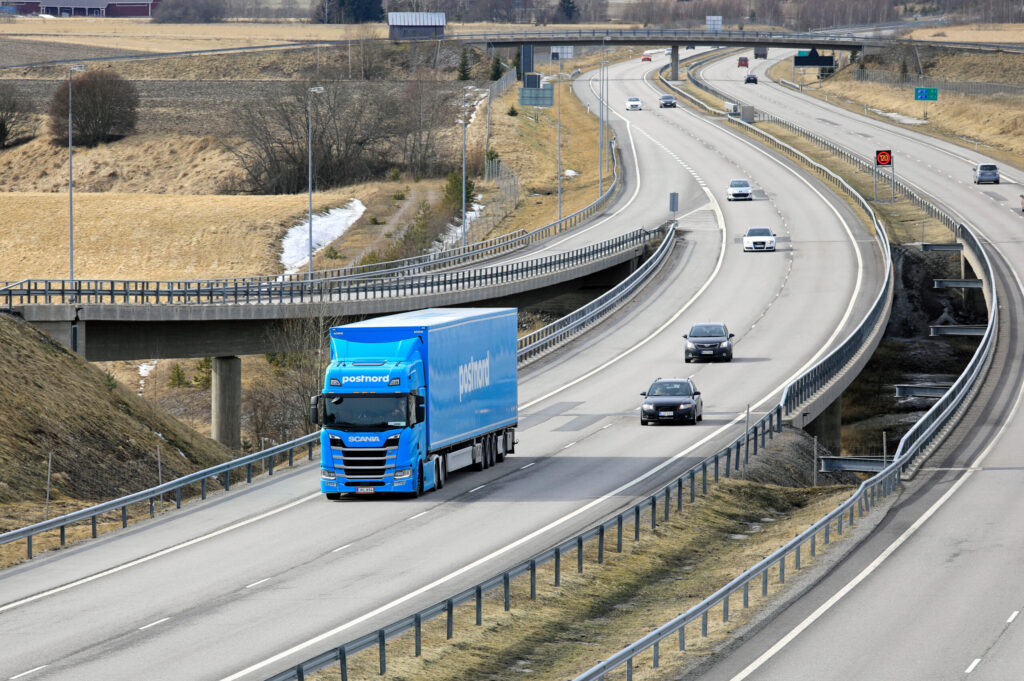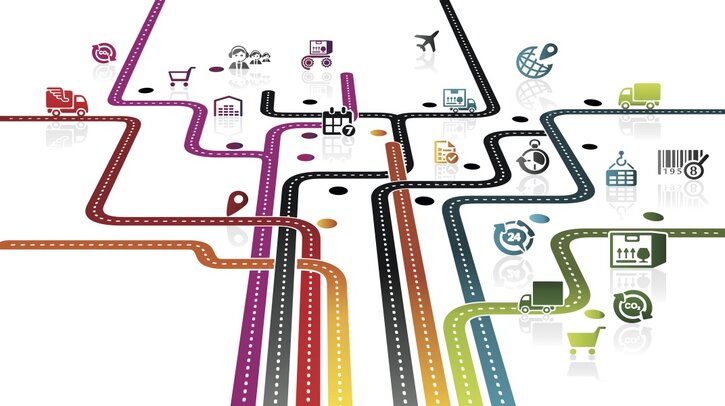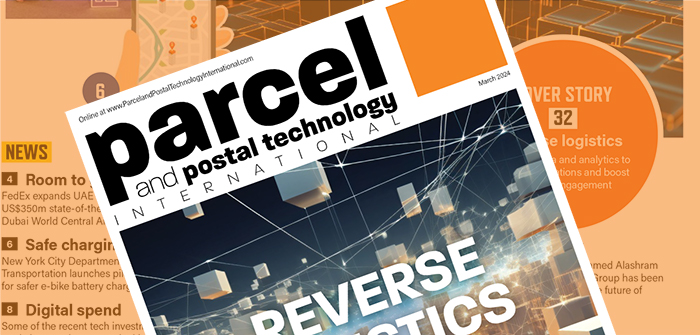The International Post Corporation’s new road-based cross-border network is helping posts increase reliability, reduce cost and cut emissions. Helen Norman speaks to the experts involved and unveils plans for CRONOS 2.0
At the height of the global Covid-19 pandemic in April/May 2020, the number of passenger flights operating daily had reduced by 95% while demand for e-commerce had increased by 25-30%, according to data released by the Universal Postal Union (UPU) and International Air Transport Association (IATA). These two figures had a huge impact on posts’ ability to transport cross-border mail and highlighted the vulnerability of operators’ international networks, which relied heavily on highly competitive air capacity.
“Postal operators prefer their cross-border priority and non-priority mail to be sent by air to reduce transportation time,” says Rudy Kwisthout, chief operations officer at the International Post Corporation (IPC). “Leveraging the available belly capacity of airlines provides them with a relatively cheap transportation model. However, it does come with its challenges.
“During the Covid-19 crisis, for example, many airlines reduced air uplift capacity and prioritized higher-revenue shipments, leaving many posts with limited to no options to transport their cross-border priority and non-priority mail.”
Knud Larn, route manager at PostNord, notes that due to the Covid-19 crisis and limited air capacity, the Nordic postal operator discovered overnight that it could not fly its mail to destinations as normal. “We were certainly challenged!” he admits.
The launch of CRONOS
The situation highlighted the need for a cross-border service that uses a ground-based network, with countries working in partnership to deliver mail internationally.
“Not long after Covid-19 hit, the IPC was contacted for a solution to deliver mail that had arrived in Europe from the USA, using a temporary trucking network,” Kwisthout says. “The network was created, with limited destinations, and worked as expected for the short time it was needed.
“However, the consistency and reliability of a cross-border road network in comparison with the airmail network was clear, and several postal organizations requested to build-out the temporary solution,” he adds.
This temporary solution became the Cooperative Road Network Optimisation Solution (CRONOS), which was officially launched by the IPC in June 2023. In short, CRONOS is a pan-European road-based distribution network, with intercontinental fly-in options. It builds on the IPC’s Sprinter Network, which uses smaller vehicles to transport priority mail throughout Western Europe.
Within CRONOS, lettermail and parcels are transported by vans and trucks from origin posts to destination posts through a dedicated central hub in Findel, Luxembourg. The participating origin postal operators are from Austria, Switzerland, the Czech Republic, Germany, Denmark, France, the UK, Croatia, Hungary, Iceland, Italy, Luxembourg, Sweden, Slovenia and the USA.
CRONOS distributes mail product from those countries’ posts to the posts in all the above countries plus Belgium, Estonia, Spain, Ireland, Lithuania, Latvia, the Netherlands, Norway, Poland, Romania and Slovakia.
At launch, CRONOS was transporting up to 140 tons of mail per week. However, in the lead up to peak season, volumes rose to an average of 185 tons per week and a peak weekly volume of almost 220 tons.
Existing IPC services and solutions are used to support CRONOS. IPC Pallet Boxes, for example, are used to optimize transportation capacity. Visibility is ensured through Pallet Box labels equipped with RFID tags. RFID gates and IPC Mail Registration Devices are installed at the Findel hub to monitor and track each Pallet Box arriving and departing the hub.
Compared with airmail routes, the CRONOS network requires one additional transportation day. However, due to the consistency of the road network, the number of late deliveries has reduced significantly compared with the air operation, according to Kwisthout. “The on-time delivery performance continues to increase on a weekly basis despite the challenges of snowy roads, road blockages and strikes,” he says. “Since the beginning of the year, we have seen a lot of improvement and are continuously driving improvements to achieve the targeted service levels.”

Setting up CRONOS
The development and rollout of CRONOS were no easy tasks and required the hard work and dedication of the IPC’s team members and its partner posts. “A working group was first set up with the posts who came forward with the request for a road network for the delivery of letters and e-commerce items,” explains Kwisthout. “We started CRONOS, which is entirely managed by the IPC, with 15 sending countries and 25 destinations. Then, through word of mouth, CRONOS became a topic of interest for managers within the postal network.”
During rollout, the IPC encountered several new challenges. “Setting up a new network for long-term use and understanding the different regulations throughout Europe, such as truck driver resting times, were challenges the IPC had not been confronted with before,” continues Kwisthout.
To help with rollout and the investment required, the IPC launched a European tender process for CRONOS, with transportation companies applying for specific routes. Transportation lanes and schedules were then created, although these did “fluctuate as the start date drew closer, requiring several adjustments to achieve the service at the intended price”, Kwisthout notes.
Other challenges encountered after the launch of CRONOS included border crossing delays, certain transportation lanes being prone to traffic jams, and the tracking of postal volumes being affected by the delayed introduction of RFID solutions. “A more positive challenge was that the total volume handled through CRONOS during the peak period in 2023 far exceeded the expectations of both the IPC and the member posts,” adds Kwisthout. “These challenges resulted in some backlogs at the central hub, which handled them on a first-in, first-out basis to minimize delays.”
Cross-border reliability and cost
Reliability, cost and sustainability (see How will CRONOS help the postal industry reduce emissions? at end of article) were the key drivers for setting up CRONOS, according to Kwisthout and PostNord’s Larn. “Many posts prefer to provide customers with a slightly longer transportation time that they can abide by, instead of giving a shorter time that might end up being extended by several days,” says Kwisthout. “This is exactly the strength of the CRONOS network. IPC has backup vehicles available from transporters contracted for the CRONOS network, providing ad hoc capacity solutions where needed to maximize the reliability.”
PostNord realized the benefits of a ground-based cross-border network during Covid-19 when it had to “improvise and swiftly build its own truck network across Europe to handle international mail”, Larn notes. “After a short time, we began sharing the European trucks with the other European postal companies and built a functioning truck network,” he adds. “Along the way we all realized that this could work on a more permanent basis, and at a lower cost than this ad hoc crisis solution came with. We also realized that the network we established was quite stable with regard to delivery times and more sustainable than air delivery.”

PostNord became one of the first posts to join the CRONOS initiative, delivering both inbound and outbound mail. “Costs are shared on a link-by-link basis and based on volume,” explains Larn. “The IPC handles the day-to-day running of the network, providing full data on the actual movement of the mail inside the network to the members.”
For some high-volume destinations PostNord still uses its own trucks for delivery. These trucks, combined with the additional CRONOS destinations, mean that almost all the post’s European volumes are now being delivered on the road. “We are also planning to add more destinations in the coming year,” says Larn.
Reflecting on the first year of operations within CRONOS, Larn says, “CRONOS gives us better stability over time. In airlift we are in full competition with the other logistics operators booking volume with the carriers. Also, as we mainly use passenger flights, the space we have for mail depends on the number of passenger tickets sold.
“Finally, we are quite dependent on the performance of individual local ground handlers. By shifting to a postal controlled road network, driving from our sending postal facility directly to the recipient postal facility, we not only get much better end-to-end control on the transportation itself but we also skip a lot of the uncertainties with the additional partners involved in airlift,” he adds.
CRONOS 2.0
The IPC is now working with PostNord and its other member posts to explore ways to make the CRONOS network even stronger. “We are currently setting up a plan for CRONOS 2.0, taking all the lessons learned during the first year to provide better reliability and visibility to all the members,” Kwisthout explains. “Our aim is to provide an extremely reliable road service and attract new posts to join CRONOS.”
As part of CRONOS 2.0, the IPC hopes to increase the volumes and routes served. If there is enough demand, additional hubs like the one in Findel will be considered. The IPC is also open to considering other ground-based transportation networks – such as rail – to strengthen CRONOS. “We are currently set up as an exclusive road network, but if future requirements from the member posts would lead to more efficient transportation by rail, this will definitely be considered,” Kwisthout concludes.
How will CRONOS help the postal industry reduce emissions?
Although CRONOS was set up to help posts with cross-border reliability during the unpredictable Covid-19 years, the network has also enabled the operators involved to reduce emissions and accelerate their sustainability initiatives. “CRONOS helps reduce emissions by switching mail from air, which is a key contributor to postal industry emissions, to ground transportation and by bundling volumes from several posts in one vehicle,” explains the IPC’s Rudy Kwisthout.
Kwisthout highlights a recently published report by the UK government, which postal organizations use for up-to-date data, where the relative emissions factors for freight travel were outlined. “Articulated lorry transportation with 100% laden cargo had a factor of 0.06kg CO2e,” he says. “Whereas short-haul air transportation is over 25 times larger at 1.67kg CO2e, showcasing just how dramatic the difference between the two transportation modes is.
“Postal organizations are under increased pressure to provide a more sustainable service to their customers while maintaining fast delivery schedules and efficient logistical services. IPC will work under CRONOS to aid the transition to more environmentally friendly solutions and continue to drive down CO2 emissions.”
PostNord’s Knud Larn is also confident that CRONOS can help posts reduce emissions. “Calculated by kilograms of mail sent by the customer, the CO2 emissions for transportation by road could be up to about half that of airlift on average – depending on destination, of course,” he says. “By having our traditional Nordic market on the road and now also most of the European market, emissions from PostNord are significantly reduced, even with today’s traditional trucks. When we look ahead to even more low-emission trucks, this effect will rise even more.”
This article was originally published in the March 2024 issue of Parcel and Postal Technology International – click here to read now!



